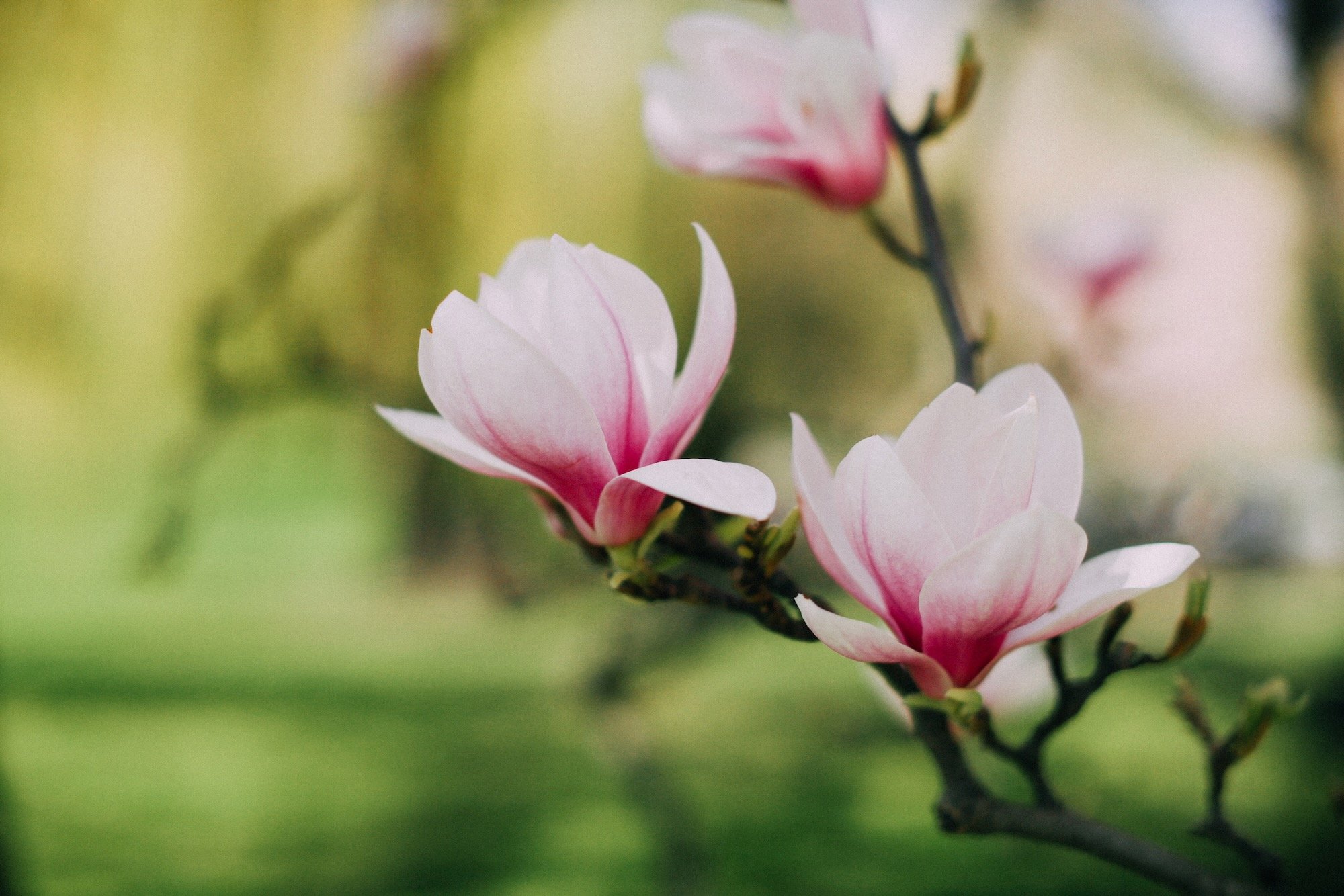Understanding the Seasonal Cycle of Trees
Spring is the Best time for SPI’s Best Buds Project - All Grades
In the spring, at the end of the day, you should smell like dirt. So says Margaret Atwood, and SPI agrees. Our Best Buds project is teacher, parent, and kid-approved! It’s all about getting dirty with a purpose. Research confirms what most already know. School performance increases when children learn outdoors. Learning outdoors is healthy. Students who learn outdoors develop a sense of self, independence, confidence, creativity, decision-making and problem-solving skills, empathy towards others, motor skills, self-discipline and initiative. Connection to place helps students develop stronger environmental attitudes and civic behaviors. And, if that’s not enough, it’s fun!
A magnolia in bud.
To begin: Have students listen to plant biologist, professor, researcher, and author (“What a Plant Knows”) Danny Chamovitz’s SPI recording found here, paying particular attention to Track 04, “Plant Senses.” Then arm them with a notebook and a pencil, a piece of string, an index card and a plastic bag and open the school doors!
Their assignment: Ask students to explore the environment and find a live twig with leaf buds. When they have found their twig, have them make a pencil sketch of it in their notebook. Their sketch should include the date, time, and weather conditions. Have them tie their string around their twig so that they will be able to find it again. Then back to the classroom to ID the plant and, on the index card, write its common as well as scientific name, along with their name.
Adding a little tech … Can’t figure out the species? Have students take a photo and upload it to I-Naturalist, found here. I-Naturalist is a community for naturalists, co-developed by National Geographic and the California Academy of Sciences. (Even if you can identify the species, I-Naturalist is worth checking out!)
Slip the index card into the plastic bag, close it up, punch a hole in the bag, then go back to the twig and attach the card to the string. Et voila! The twig is now a bonafide Best Bud!
Students should visit their Best Bud as frequently as possible with their Nature Notebook and drawing and writing implements in hand. The assignment is simple - document its transition from early spring bud to flower and, finally, leaf. What is happening - and why?
Their notebook entries should include sections of reflective writing and detailed description. In addition to drawing, explain what the plant looks like, the twig, the bud, the flower, the leaf, and various aspects of the scene. What are the weather conditions? What does the air feel like? What thoughts are brought forward? How does it smell? Is there wildlife in the area? Birds, insects, squirrels? What are they doing and why is it important? Ask kids to take off their shoes and walk around in their stocking feet. What sticks to their socks? What’s on the grass or in the soil? Why does that matter?
A page from one of Meriwether Lewis’ journal.
Students may wish to collect and store branches, seeds and seed pods, and perhaps a piece of bark. As part of their notebook entries, they should note questions, make analogies, and compare and contrast the distinctive features of their plant and bud with others in the surrounding area. Ask them to draw life-size and then enlargements of a cross-section of a pre-flowering bud, leaves and leaf scars, leaf arrangements, bark characteristics, seeds, and seed capsules. This project can be involved or simple and it can go as far as time, interest, and imagination allow.
Research the Nature Notebooks of some well-known naturalists and explorers. Pictured: A page from Meriwether Lewis’s journal.
In addition to listening to Danny’s recording, kids who love nature may enjoy listening to the SPI recording of one of America’s best nature writers, Bernd Heinrich, found here. Or the renowned naturalist, writer, and artist David Carroll. His recording can be found here. There are numerous other naturalists, environmentalists, and wildlife preservationists in SPI’s Earth and Environment collection, all found in the 4-12 Learning Lab / Science / Earth and Environment.
And always great - an end-of-project Nature Notebook school or classroom-wide display. The budding artists, writers, naturalists, and environmental stewards of tomorrow will surely take great pride in seeing their work viewed by a wide and admiring audience.
For those not comfortable with sketching, consider photography. The students’ Nature Notebooks, as highly creative science-based endeavors, will be as individual as the students themselves and the buds that they chose. And just wait until they hear what Danny has to say!! It’s a game changer.
For more on Danny and his SPI recording, click here to access an earlier blog post.
About Us
SPI makes its work available to all, free of charge.
Story Preservation Initiative has developed two Learning Lab projects: Our “Storytelling Learning Lab” is appropriate for students in grades Pre-K through 3, and our “Learning Lab” project is suited for students in grades 4-12.
Our Vision: Story Preservation Initiative believes in the transformative power of story to connect people around our common humanity and create a better future. We value generosity, diversity, inclusivity, and equity in our stories and in our outreach, exploring and illuminating the deepest levels of human potential.
Our Mission: Story Preservation Initiative is a leading producer and online distributor of original, content-rich stories for K-12 students. Our open-access stories and educational materials are used by educators nationwide with a focus on New England, engaging the hearts and minds of young people to impart content knowledge and foster curiosity, creativity, and critical thinking as they open doors to possible career paths in professions associated with the arts, sciences, humanities, and trades.
WEB: www.storypreservation.org
Please consider making a donation - in any amount - to help us keep the stories coming. To make a tax-deductible donation, click here.




